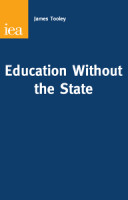James Tooley
1. Functional illiteracy, youth delinquency and lack of innovation point to the failure of state schooling. They raise the question of why governments should be involved in education.
2. One justification for state intervention is to ensure educational opportunities are available to all. However, the great majority of people would not need state intervention for funding or provision of educational opportunities.
3. This conclusion is supported by recent experience around the world. Educational entrepreneurs have stepped in where state education is failing.
4. It is also said that equality of opportunity requires state intervention in education. Yet it is not clear that states anywhere have been able to provide equality.
5. Moreover, arguments against ‘markets’ in schooling which purport to show how they increase inequality actually point to problems with state regulation and provision themselves.
6. Many thinkers agree that justice or fairness requires that everyone has adequate opportunities. But markets – with a funding safety-net – could provide adequate educational opportunities for all and more effectively than further state intervention.
7. A final justification is that state regulation of, inter alia, the curriculum is required.
8. Lessons from the recent history of the national curriculum illustrate its undesirability and suggest that such decisions should be left to parents and young people themselves.
9. Given that continued state intervention cannot be justified, how can we move towards markets in education? A simple proposal is put forward.
10. Lowering the school leaving age to 14, and simultaneously giving young people two years’ state funding for them to use in a Lifelong Individual Fund for Education (LIFE), would help liberate the educational demand side which, coupled with liberation of the supply side, would enliven and nurture the enterprise of education.


